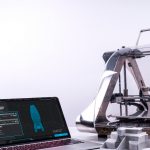Top IoT Trends That Will Shape the Digital World

What comes to mind when you hear the term IoT? Is it the voice-activated Alexa, the smart automation controlling your home’s electricity, the biometric system securing your workplace, or the interconnected smartwatch syncing with your phone and laptop? These examples illustrate the seamless convenience that IoT (the Internet of Things) brings to our lives.
IoT is a remarkable technology that connects different devices, enabling them to communicate and collaborate seamlessly. It has become a powerful force in the tech world, bridging the gap between reality and the virtual realm and revolutionizing businesses worldwide.
According to Finances Online, the number of IoT devices in use will exceed 25 billion in the next seven years. This staggering growth emphasizes the importance of businesses staying informed and adaptable in a rapidly evolving market. As a result, the most successful companies are those that think creatively about emerging technologies and find innovative ways to harness their potential.
By 2030, an astonishing 75% of all devices are expected to be IoT-enabled, signaling the immense impact of this trend. Keeping a finger on the pulse of the latest IoT trends is vital to thrive in this ever-changing technological landscape. So, let’s embark on a journey to explore the future of IoT technology and the trends shaping global markets in 2023. Get ready for an exciting and insightful discussion!
Top IoT Trends You Shouldn’t Miss Out
With the global IoT market projected to skyrocket from $478.36 billion in 2022 to a staggering $2,465.26 billion by 2029, at a remarkable compound annual growth rate (CAGR) of 26.4%, it’s clear that IoT technology is set to revolutionize the way businesses harness their data.
To stay ahead of the curve, businesses must keep a keen eye on the top IoT trends shaping the landscape in 2023. Creativity and innovation will be the driving forces to unlock the full potential of IoT. So let’s dive in to know the top IoT trends.
1. Metaverse
The metaverse and IoT are often seen as two different technologies but are closely related. The metaverse needs IoT to provide the data and connectivity required to function, and IoT needs the metaverse to create new markets and applications.
The combination of the metaverse and IoT has the potential to revolutionize the way we live, work, and play. For example, the metaverse can provide immersive educational experiences, create new forms of entertainment, and make our homes more efficient. IoT can provide the data and connectivity that the metaverse needs to thrive.
The metaverse and IoT are still in their early development stages but can potentially change the world. Working together, these two technologies can create a new era of innovation and opportunity.
2. Edge Computing
The market for edge computing is experiencing rapid growth, with global revenue projected to reach a staggering $274 billion by 2025, according to Statista. This cutting-edge computing model revolves around a diverse array of devices and networks located close to the end user. By analyzing data at its source, edge computing enables faster processing speeds and the handling of larger data volumes, resulting in real-time actionable insights.
This transformative technology opens new business opportunities and allows organizations to stay competitive in today’s fast-paced world. One notable trend in the public cloud market is the emergence of edge computing solutions with cloud-like features, driven by influential retailers like Dell, IBM, and HPE. These advancements are poised to make a significant impact as they empower organizations to cater to customers in new locations while providing improved control and flexibility.
3. Digital Twins
The year 2020 witnessed the emergence of a groundbreaking concept known as digital twins. These virtual representations serve as real-time digital equivalents of physical objects or processes. Digital twins have found diverse applications in diagnostics, optimization, monitoring, asset utilization, and performance control.
According to Fortune Business Insights, the global market size for digital twins was valued at $8.60 billion in 2022 & is forecasted to reach an impressive $137.67 billion by 2030, exhibiting a remarkable CAGR of 42.6% during the forecast period. This exponential growth is driven by the convergence of digital twin technology with the realms of the Internet of Things (IoT), artificial intelligence (AI), and data analytics.
Digital twins are transforming data analysis and decision-making with emerging IoT trends. These virtual replicas are indispensable for data scientists and IT professionals, optimizing installations and exploring potential scenarios. With their transformative capabilities, digital twins propel the IoT landscape forward, opening new opportunities and driving progress in the digital sphere.
4. IoT powered with 5G technology
IoT powered with 5G technology integrates Internet of Things (IoT) devices with fifth-generation (5G) wireless networks, bringing remarkable advancements to IoT deployments. By combining the capabilities of 5G networks, including faster and more reliable connectivity, low latency, and high bandwidth, IoT devices can communicate seamlessly, enabling real-time data transmission, processing, and analysis.
This integration is particularly beneficial for applications that require high-speed connectivity, such as autonomous vehicles, remote surgery, and immersive experiences.
A compelling example of a company that has successfully embraced these Internet of Things trends powered by 5G technology is BMW, a prominent automotive manufacturer. BMW has leveraged 5G connectivity to enhance its connected car capabilities and provide advanced features to customers. With IoT and 5G integration, BMW vehicles can access real-time traffic data, weather information, and mapping services, enabling more efficient navigation and optimized routes.
Moreover, using 5G allows BMW cars to receive over-the-air software updates, enhancing functionality and introducing new features without needing physical visits to service centers. This integration showcases the potential of IoT and 5G technology in the automotive industry, elevating the driving experience and driving innovation in the market.
5. Smart Cities
IoT technology offers numerous applications for developing smart city networks, addressing various challenges, and improving urban living. One critical aspect is traffic monitoring, where city-wide sensors enable effective control of intersections for optimized traffic flow. Additionally, water level monitoring plays a vital role in detecting and alerting citizens about potential or active flooding, allowing for prompt response and future prevention measures. Embracing the transformative role of IoT in smart cities unveils a future where urban areas are not only smarter but also more adaptive and resilient, seamlessly integrating technology to enhance daily life.
Smart streetlights serve as versatile platforms for IoT solutions. They can host a range of sensors to detect weather conditions, monitor traffic, provide public Wi-Fi, and facilitate surveillance. These street lights can also serve as edge devices, controlling digital street signs and offering mounting options directly on the light poles.
An excellent example of smart city innovation is Smart Columbus in Ohio, which has successfully experimented with self-driving shuttles. This futuristic initiative demonstrates how smart cities can reduce reliance on private vehicles, fostering sustainable and efficient transportation alternatives.
6. IoT Transforms The Global Supply Chain
With IoT, every aspect of the supply chain becomes interconnected, creating a web of smart devices that communicate and collaborate seamlessly.
This one of the top emerging IoT trends is doing great in supply chain management with a warehouse where sensors and smart tags monitor inventory levels in real-time, automatically triggering replenishment orders to suppliers. Delivery trucks equipped with IoT devices use GPS tracking and data analytics to optimize routes, reducing fuel consumption and improving delivery times. Smart shelves in retail stores detect product availability, triggering automatic restocking.
Moreover, IoT-powered sensors track environmental conditions, such as temperature and humidity, ensuring optimal storage conditions for sensitive goods like pharmaceuticals or perishable items. This level of precision and monitoring prevents spoilage and reduces waste, ultimately saving costs and improving customer satisfaction. Among the commonly used sensors in IoT, these environmental sensors play a pivotal role in maintaining product integrity and optimizing supply chain efficiency.
The interactive nature of IoT allows supply chain managers to have a bird’s-eye view of operations, identifying bottlenecks and optimizing processes in real-time. In addition, with advanced analytics, predictive maintenance can be implemented, reducing downtime and enhancing overall operational efficiency.
7. Smart Homes
The smart home industry has undergone a remarkable transformation with the rise of digital assistants like Google Assistant, Amazon Echo, and Apple’s Siri. These intelligent voice-controlled devices have revolutionized how we interact with our homes, allowing us to effortlessly manage a multitude of devices such as lights, appliances, and security systems.
While it may seem like the technology has reached its peak, there is still tremendous room for growth and innovation in the smart home sector. Experts projected that the Smart Home Market will continue to grow, with a projected size of USD 867.87 billion by 2030, growing at a remarkable CAGR of 23.6% from 2022 to 2030, according to Verified Market Research.
With the Internet of Things trends, nowadays, networks are expanding their capabilities to automate various tasks, including lighting, temperature control, and security. Homeowners can manually configure this automation or rely on AI algorithms that analyze sensor data and usage patterns to optimize and personalize their smart home experience.
As technology continues to evolve, the smart home industry will push boundaries, bringing us even closer to the futuristic vision of seamlessly integrated and automated homes. The possibilities are endless, and we can expect exciting developments in the years to come.
8. IoT-Empowered AI Applications
The convergence of IoT and artificial intelligence (AI) has paved the way for groundbreaking applications that leverage the power of intelligent systems. By harnessing IoT devices’ capabilities and AI algorithms’ analytical prowess, organizations can unlock valuable insights and drive innovation across various domains.
One notable example of a company successfully leveraging IoT-empowered AI applications is Nest Labs, a subsidiary of Google. Nest specializes in smart home automation and has developed a range of products, including smart thermostats, cameras, and doorbells. These devices incorporate IoT sensors to gather data about temperature, occupancy, and security, among other parameters. By applying AI algorithms to analyze this data, Nest’s devices can learn user preferences, optimize energy consumption, and provide personalized experiences.
For instance, Nest’s Learning Thermostat learns the temperature preferences of users and creates customized schedules to maximize comfort while reducing energy waste. In addition, the AI capabilities enable it to adapt to changing weather conditions and occupancy patterns, ensuring optimal temperature control. Moreover, Nest’s cameras and doorbells use AI algorithms to detect and classify objects, enabling features like person detection and facial recognition for enhanced security.
Through integrating IoT and AI, Nest Labs has revolutionized how people interact with their homes, creating intelligent and intuitive environments. This example showcases the immense potential of IoT-empowered AI applications in improving efficiency, personalization, and convenience for consumers.
9. Wearable IoT Technology
One aspect that demands attention is wearable technology. These innovative devices, ranging from smartwatches to AR/VR headsets, are unprecedentedly reshaping our world. However, wearable IoT technology is more than just a trend; it is a gateway to a future where connectivity intertwines with our daily lives.
At the forefront of this revolution, smartwatches, earbuds, and other wearables are pushing the boundaries of what’s possible. They seamlessly blend fashion with functionality, allowing us to stay connected, track our health, and enhance our experiences. But the impact extends far beyond convenience.
Wearable IoT devices hold immense potential in healthcare, revolutionizing patient monitoring, emergency response, and health record management. They empower medical professionals with real-time data, enabling swift decision-making and personalized care.
Moreover, the fusion of IoT with AR/VR opens up immersive realms. Surgeons can perform intricate procedures with augmented reality guidance, while manufacturers can optimize processes through virtual reality simulations fueled by IoT sensor data. These wearables bring new efficiency, accuracy, and safety dimensions to various industries.
By keeping an eye on the IoT’s future trends, including wearable technology, businesses can stay ahead of the curve and explore new opportunities for innovation, improved user experiences, and enhanced connectivity.
10. Industrial Internet of Things (IIoT)
The Industrial Internet of Things (IIoT) is heralding the onset of the fifth industrial revolution, also known as Industry 5.0. Far from being mere buzzwords, IIoT has become an established reality that continues to grow rapidly. Pursuing process optimization, cost reduction, predictive maintenance, and preserving process integrity and business continuity drives its deployment in various industrial sectors.
IIoT offers compelling benefits, including an exceptionally fast return on investment (ROI), with an average ROI period of less than two years. This makes it attractive for businesses looking to maximize efficiency and minimize financial risks. IIoT’s ability to prevent production stoppages resulting from faults safeguards against potential massive financial losses.
Moreover, industrial IoT trends transform traditional manufacturing, energy, transportation, and healthcare sectors by enabling real-time monitoring, remote operations, and advanced analytics. By leveraging the power of interconnected devices and data analytics, IIoT empowers organizations to make data-driven decisions, optimize processes, and proactively address maintenance issues.
As the current IoT trend gains momentum, IIoT’s impact on industries will continue to grow. Its proven ability to deliver tangible benefits, combined with the pressing need for digital transformation, positions IIoT as a strategic imperative for businesses seeking to remain competitive and future-ready. Embracing IIoT trends unlocks new opportunities for innovation and ensures organizations can thrive in the interconnected and data-centric landscape of the modern industrial era.
Conclusion:
Many companies are increasingly adopting IoT and leveraging reliable IoT application development services to capitalize on the top trends in this domain. The growing demand for IoT integration is driving remarkable advancements. Utilizing cutting-edge technologies is anticipated to lower costs and significantly enhance productivity across various levels.
IoT empowers industries to access and monitor requirements remotely, equipping them to address foreseen challenges proactively. These trends have led to a rising curve towards the IIoT market, driven by its immense growth and reliability. Moreover, this technological revolution has opened up new avenues of innovation and transformation.
Finoit Technologies is a renowned mobile app development company providing custom software development services and IoT application development services. We have developed over 450 mobile apps and have assisted many solopreneurs in their journey of startups by functioning as tech partners and rolling out their product ideas. For questions/queries, you may write to us at info@finoit.com


